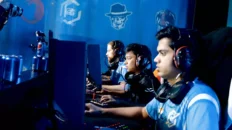What’s LiveOps?
Imagine you have a basic Lego set. At first, you build with it just as the instructions show, creating the simple structure that’s pictured on the box. But as you play more, you start to imagine more: towering skyscrapers, intricate bridges, or even bustling cities. Instead of buying a whole new set, you rearrange and add to your existing pieces, crafting new and exciting creations each time.
That’s what LiveOps in gaming is like! After a game is launched, the developers don’t just leave it as it is. They keep adding new stuff, fixing any issues, and making sure players always have something exciting to look forward to. Just like how you keep improving your toy train set, game developers use LiveOps to keep their games fresh and fun!

In the ever-evolving world of mobile gaming, LiveOps has emerged as a strategic ace up the sleeve. It’s not just about launching a game; it’s about continually refining and enhancing the player experience. But how does it work?
Improving Player Experience with LiveOps
LiveOps can significantly elevate the player experience and engagement. By allowing developers to introduce regular content updates, seasonal events, and targeted promotions, players always have something new to explore. These dynamic changes encourage users to invest more time and even make in-app purchases, potentially boosting in-game revenue.
Fortnite:
- Frequent updates: Fortnite is known for its frequent updates, which add new content, fix bugs, and improve gameplay. These updates keep the game fresh and engaging for players.
- Seasonal events: Fortnite has seasonal events that introduce new challenges, rewards, and cosmetics. These events create a sense of urgency and excitement among players, encouraging them to keep playing.
- Targeted promotions: Fortnite uses targeted promotions to encourage players to spend money on the game. For example, they might offer discounts on in-game items to players who haven’t made a purchase in a while.
Clash of Clans:
- Regular content updates: Clash of Clans releases regular updates that add new features, units, and game modes. These updates keep the game fresh and engaging for players.
- Addressing player feedback: Clash of Clans listens to player feedback and uses it to improve the game. For example, they might adjust the balance of units or change the matchmaking system based on player feedback.
- Adapting to market trends: Clash of Clans stays up-to-date with market trends and adjusts the game accordingly. For example, they might introduce new game modes or features that are popular in other games.
Both Fortnite and Clash of Clans have been successful in using LiveOps to keep their games fresh, engaging, and profitable years after their initial release. By implementing smart LiveOps strategies, they have been able to continuously evolve and improve their existing games, keeping them relevant in a rapidly evolving gaming industry.

Adapting to Player Choices: How LiveOps Uses Data
Think of a mobile game as a bustling city. In this city, there are various buildings representing different types of data:
- User Building: This is where your basic details are, like your name and login info.
- Character Building: Here, we find details about your game characters; their levels, achievements, and more.
- Game Resources Building: This place houses the game’s core tools and assets, like the design of in-game items.
- Activity Building: Think of this as a diary that notes down everything you do in the game; from the items you collect to the levels you complete.
- Real-time Activity Building: This is like a live news feed, updating in real-time, capturing every move you make.
Now, imagine if this city could reshape itself based on what its residents like or need. If people visit the park often, the city builds more parks. If they love a particular restaurant, it expands. This is what LiveOps does for games. It watches how players interact, what they like, and what they don’t. And then, it adapts the game to make it more enjoyable for everyone.
So, every time you play and make choices, the game learns a little more about what you and other players like. The goal? To ensure every time you log in, you have an even better gaming experience than before!
The Essential Components of LiveOps
- Real-time Analytics and Data-driven Decision-making: Gathering real-time data is the backbone of LiveOps. This data provides crucial insights into player behavior, preferences, and motivations.
- A study conducted by Newzoo found that 70% of gamers believe real-time analytics and data-driven decision-making have a positive impact on their gaming experience. This suggests that players value the insights and personalized experiences that data-driven approaches can provide.
- Accenture revealed that gaming executives believe that real-time analytics and data-driven decision-making are critical for staying competitive in the gaming industry. This indicates that industry professionals recognize the importance of leveraging data to gain a competitive advantage.
- Management and Dynamic Content Updates: Much like how games like Fortnite frequently introduce new content through seasonal promotions and limited-time events, LiveOps ensures that mobile games remain ever-engaging for players. Regular dynamic updates, whether it’s a Halloween-themed transformation or the addition of new tools and features, keep the in-game experience fresh and exciting, consistently drawing players back into the virtual world.
- Automated Player Communication: Through targeted messages and automated game support, fostering a strong bond between the player and the game.
- In games like “The Sims,” automated player communication is used to create a bond between the player and their virtual characters. The game may send automated messages to inform players about their characters’ needs, relationships, or upcoming events, allowing players to stay connected to the virtual world they have created.
- FIFA or Madden utilize automated player communication to provide guidance and tips during gameplay. The game might send automated messages with hints on how to perform certain moves or strategies, helping players improve their skills and enjoy the game even more
LiveOps in Action: Tools and Software
The success of LiveOps rests on powerful tools that streamline its implementation:
- Ratic: An intuitive tool geared towards boosting player engagement and revenue.
- PlayFab: A backend platform that brings a range of functionalities.
- DeltaDNA: This platform emphasizes data-driven strategies, crafting personalized gaming experiences.
- GameSparks: Integrated with the AWS ecosystem, it offers a robust set of tools.
A Double-Edged Sword?
As transformative as the LiveOps model can be for mobile gaming, it’s not without its challenges. Recent headlines about high-profile games being pulled have cast a shadow over the approach, prompting questions about its sustainability. The economic climate, with rising user acquisition costs and inflation, only adds to these pressures. There’s also the inherent challenge of transitioning from traditional gaming models to one centered on continuous engagement and recurring revenues. Such shifts can be particularly daunting for AAA teams, who must not only adapt to a new development paradigm but also align corporate leadership and shareholders to this vision.
Additionally, the content treadmill can be relentless; teams often find themselves in a race to churn out fresh content, risking burnout and potentially compromising game quality. It’s a delicate balance, and while many succeed, others grapple with these intricacies.
Conclusion
LiveOps is reshaping the landscape of mobile gaming. It’s an ongoing commitment to players, ensuring games remain dynamic, engaging, and responsive to player needs. As developers and designers, understanding and efficiently deploying LiveOps, strategies will be pivotal in crafting games that stand the test of time.
Experience the dynamism of LiveOps. Because in the world of gaming, the journey doesn’t end at launch – it’s only just beginning!





